“As I explored the hilly terrain for birds at Phong-Nha village, I came upon the best panoramic view – a photo shoot that would paint a thousand words of Son River and a fleet of tourists’ boats waiting to disappear into the Phong-Nha Cave (above and below).
“The livelihood of villagers appears to seemingly thrive on transportation and tourists’ trade while subsistence crop farming struggles alongside the river (below).
“It was simply lovely to sit and gazed alongside the river for coffee break and enjoyed the peace and outcrop greenery abound (below).|
“Seen were egrets and pond-herons foraging while a lone, shy Common Kingfisher (Alcedo atthis) found comfortable perch over a low, observatory bush at the river edge. He was oblivion of water buffaloes gazing by (below).
“It wasn’t long before my eyes spotted something different. Three non-breeding Pheasant-tailed Jacanas (Hydrophasianus chirurgus) flew into sight and decided to glide low and landed on the river. Here are two of them (below).
“In a brief collaboration with Scientific Research Centre of Phong Nha-Ke Bang National Park, this sighting was a bonus – a new species photographed and contributed to their bird checklist compiled in 2008.
“I have never seen so many White-vented Mynas (Acridotheres grandis) before. Like Common Mynas (Acridotheres tristis) frequently sighted in Peninsular Malaysia, the ‘White-vented’ were seen frequently and in small flocks at the village, countryside and crop fields of Phong-Nha, North Central Vietnam. Here is one perched on limestone rock (below-left).
“These Mynas were following the water buffaloes and took every opportunity to chance a quick snack of insects/grasshoppers stirred up by their heavy footings (above-right, below-left).
“One was seen taking free rides, tapped dancing to the rhythm of a strolling and grass grazing hoofed pal, who seemed used to having riders and didn’t seemed to mind (above-right).
“The White-vented Mynas followed the buffaloes for a river bath while the birds drank, stretched in comfort position from their mobile ‘pontoon’ perch without getting wet (below).
“Ox peckers in Africa are known to pick and forage for ticks/ectoparasites off animals’ back. It is a symbiotic exchange and perhaps these birds also act as parasites, stealing a bloody drink from raw wounds of oxen as documented in National Geographic documentaries.
“Seen above is a similar symbiotic arrangement where a White-vented Myna (Acridotheres grandis) perched at the far end prospecting buffalo tick/ectoparasites on its back.
“Do find out one of the causes of reduced wild bird population as observed in my next finale article.”
Avian Writer Daisy O’Neill
Penang, Malaysia
Copyright article and all copy images – Courtesy of Daisy O’Neill Bird Conservation Fund




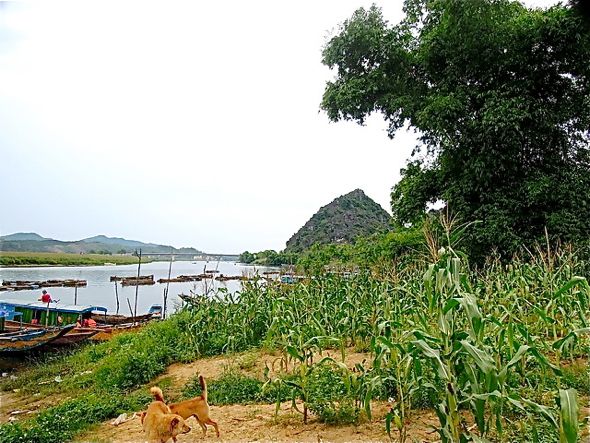

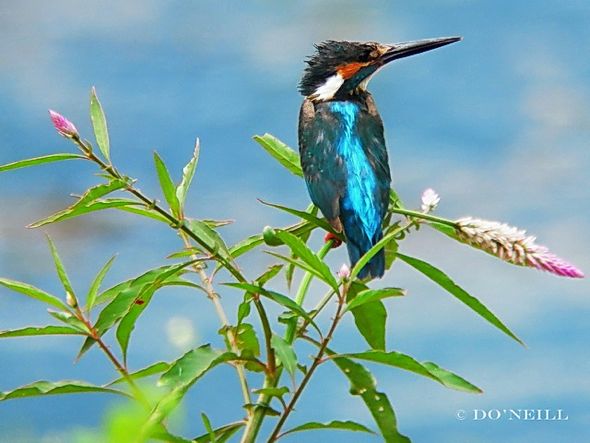


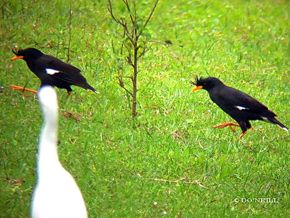
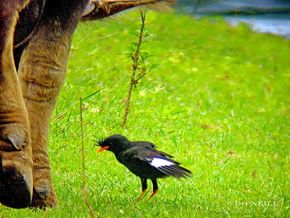


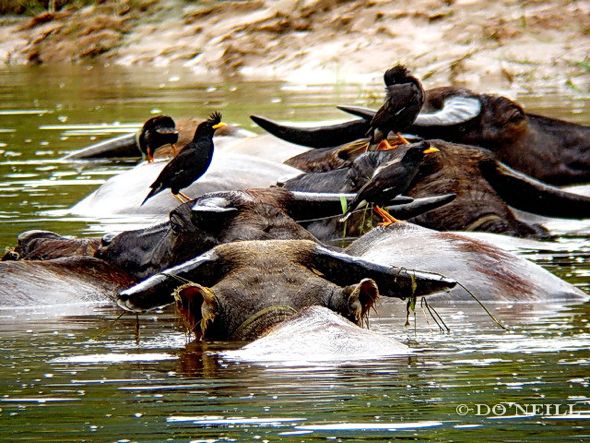







One Response
Nice pictures & good write-up. Enjoyed reading it! Thanks!!!